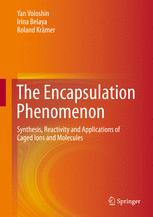

Most ebook files are in PDF format, so you can easily read them using various software such as Foxit Reader or directly on the Google Chrome browser.
Some ebook files are released by publishers in other formats such as .awz, .mobi, .epub, .fb2, etc. You may need to install specific software to read these formats on mobile/PC, such as Calibre.
Please read the tutorial at this link: https://ebookbell.com/faq
We offer FREE conversion to the popular formats you request; however, this may take some time. Therefore, right after payment, please email us, and we will try to provide the service as quickly as possible.
For some exceptional file formats or broken links (if any), please refrain from opening any disputes. Instead, email us first, and we will try to assist within a maximum of 6 hours.
EbookBell Team

0.0
0 reviewsThis fundamental book presents the most comprehensive summary of the current state of the art in the chemistry of cage compounds. It introduces different ways of how ions and molecules can be encapsulated by three-dimensional caging ligands to form molecular and polymeric species: covalent, supramolecular, and coordination capsules. The authors introduce their classification, reactivity, and selected practical applications. Because encapsulation can isolate caged ions and molecules from external factors, the encapsulated species can exhibit unique physical and chemical properties. The resulting specific reactivity and selectivity can open up a range of applications, including chemical separation, recognition, chiral separation, catalysis, applications as sensors or probes, as molecular or supramolecular devices, or molecular carriers (cargo).A particularly strong emphasis in this book is on the summary and review of the synthesis of various types of cage compounds. Readers will find over 850 literature references summarized and clearly represented in over 600 schemes and illustrations. The book is structured by the types of caging ligands (covalent, supramolecular, or coordination capsules). The authors further arranged the chapters by ligand classes and types of encapsulated species (neutral molecules, anions, or cations). Readers will hence find an exhaustive reference resource and summary of the current state of research into encapsulated species, nowadays almost a separated realm of modern chemistry.